The first night of curfew and a surprise ‘abduction’

It was a clear moonlit night. There was a slight breeze. An eerie quiet blanketed the streets. I could even hear our bike's growl echoing off the walls along the deserted streets. Compared to the sounds of gunshots, the acrid smell of tear gas and loud slogans during the day, the night was quite the contrast. It was past midnight on the 19th of July. We had reported 66 deaths that day -- the highest death toll in a single day since our independence. The government came down with a countrywide curfew from midnight ordering the police to 'shoot at sight'. Army would be patrolling the streets too.
But we were not going to pass up this opportunity. Until then I had only heard of curfews. This was my chance to see how Dhaka looked during one. So, we were out and about with our bikes cruising around town from one end to the other. We hoped on the off chance that we would happen upon some interesting bit of news since most other journalists would not venture out tonight, having spent a hectic, draining day.
The first night of curfew
The first stop was close to the Khilgaon flyover, where we took photos of the clear night and the empty streets. There were a few ambulances and trucks on the road. The rickshaws around the Khilgaon railgate area seemed to be in a hurry.
Some trains were sitting idle on the rail tracks at the Kamlapur Railway Station because the tracks were damaged at several points in the last few days.
Then we rode towards Dhaka University campus, which was the heart of the campaign like so many other movements against dictators and autocrats. All the entry points -- Shahbag, Doel Chattar, Jagannath Hall and Nilkhet -- were heavily guarded by law enforcers. The only way we could get in was through Fuller Road which goes right past the vice chancellor's bungalow. There were a few police constables beside the VC's residence. But we joked that it was unlikely he was sleeping in the house that night.
We went past the residential halls through Mall Chattar, which had become a battlefield two days ago when the government decided to shut down the campus. The empty roads and the brick chips bore silent testimony to the processions and slogans, and the pitched battles students fought.
At around 2.30am, we went back to the office to pick up Sukanta Halder, another colleague who did not want to miss out either. Our chief reporter, Pinaki Roy, a veteran of another bout curfews from back in 2007, was asleep on a sofa not risking a ride home fearing he might be barred from leaving home.
With Sukanta riding pillion with one of us, we headed towards the Dhaka Medical College Hospital. We went into the morgue to see if anyone was waiting for the body of their kin. We did not find anybody there, though. However, the guards said there would be similar cases at other hospitals.
The night gradually began to turn grey. We were riding through an upscale residential area of Dhanmondi at that time. Along with Mohammadpur, this area had become a battlefield just the day before. The pavements had cracked tiles and the streets were strewn with burnt cars, buses and pick-up vans.
We first came across an olive patrol car around 6:05am in front of the national parliament. On our way to Jahangir Gate, we found that the army jeeps and vans had started deploying soldiers at different places in the city. Then we encountered our first security check at the Bijoy Sarani intersection. It seemed our luck ran out for the night.
Then my phone rang.
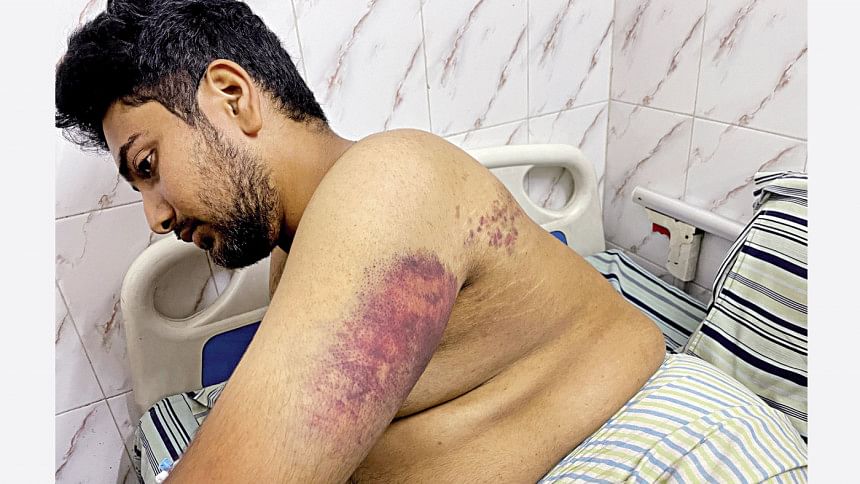
Nahid is abducted
The caller, a mutual acquaintance, delivered urgent news: Nahid Islam, a key coordinator of the student protests, had been taken by law enforcers from a house in Sabujbagh. Nahid, now a key adviser to the interim government, had been a prominent face of the movement, issuing statements and leading the charge against the quota system. This was the break we had been waiting for.
I asked him for a specific location, if not the address so that I could go there and talk to people for the story. Although in this day and age news was a 24-hour business, it ground to a halt in Bangladesh because the internet had been shut down. The news item would only reach the readers in the following day's newspaper which was another 24 hours away.
We were confused at first. We did not know which route to take, to get to that spot in Sabujbagh. The shortest route was through Hatirjheel and Banasree. But since we had been covering the protests in that area the previous day, we knew that it would be near impossible to ride through that area since the protesters had put up barricades felling trees on the road. We decided to still try our luck.
It was around 7:30am by the time we made it to the spot. But no one answered the door. We knocked several times. We could see faces peeping at us from the corners of their balconies and go back inside. Everyone was terrified. We shouted we were journalists trying to find what had happened to no avail.
Then we proceeded to talk to some of the locals. We spoke to the night guards in the area and also the imam of the local mosque. They confirmed that Nahid was in that house last night and some 25–30 law enforcers in plainclothes, including a woman, had come in four cars. They had stormed the building breaking the locks at the entrance. Witnesses said someone had in fact scaled the boundary wall to get in and break into the main entrance.
One witness had even more details saying that the lock at the collapsible gate was too strong and the law enforcers needed heavier equipment. They had to wait for another unit to arrive with the equipment before they could break into the building and carry out their search.
Nahid was apparently on the roof and was taken into custody from there. The contingent left after about half an hour.
This was a major story. Nahid had been one of the faces of the student protest since it began just about three weeks ago. He had issued statements and announced programmes on behalf of the student protesters. We went home to rest up and came to work around noon to file the story of a leading student leader being 'allegedly' detained.
Two black cars
But something that a witness had said kept bothering me. One of the night guards we had spoken to said two black cars had joined other SUVs and microbuses during the night-time raid. Since no one had admitted to detaining the student coordinator, pinpointing the agency behind his detention if not abduction, would still be a substantial piece of information.
So, the next day, things being quiet due to the curfew, I went back and scouted the streets around the house from where Nahid had been taken away. I tried to identify CCTV cameras of nearby buildings that might have proof of the abduction.
There were three likely spots where the CCTV footage should have picked up the vehicles—a motorbike workshop, an electronic sales and repair shop and a pharmacy.
First, I approached an employee of the workshop saying that last night my brother's motorbike had been snatched from this area and wanted to see the footage. He could not be less bothered by my plight. "Come back after lunch and speak to the owner."
I went to the electronics shop and got the same response. The owner and attendant looked at each other. One said they can't operate the monitor and the footage is not clear at all.
It is difficult to say how, but I had a feeling that people would cooperate if I told them the truth that I wanted to find out who abducted the student leader from their area. It's an instinctive feeling that grew from the pit of my stomach. So, I blurted out, "I want to find out who has abducted Nahid, a key organiser of the protests."
I could tell from their eyes that my hunch was right. The attendant came forward and explained -- in an almost conspiratorial undertone -- how to operate the CCTV monitor. I spent more than two hours trying to identify the cars. They were right. The footage was too blurry to make anything out for certain. The duo suggested I go to the pharmacy, which might have better-quality footage. It had remained shuttered for the whole time that I was there. But they told me where to find the owner.
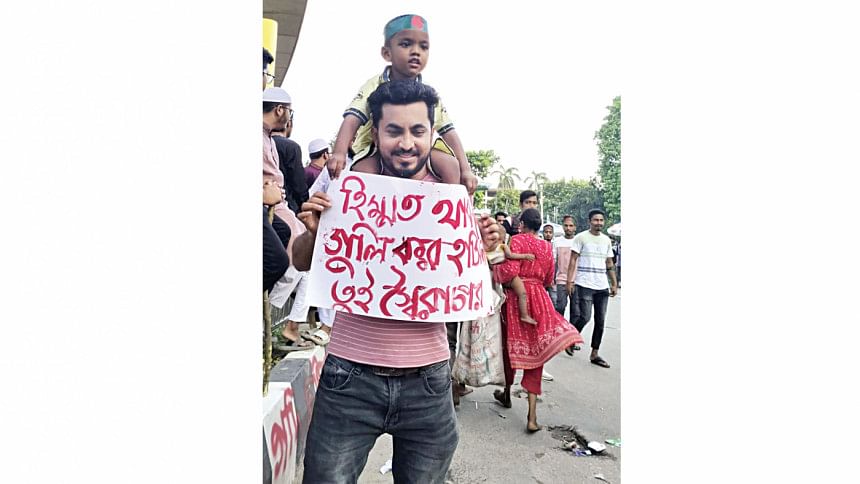
A bit of cloak and dagger
I found the owner of the pharmacy at an under-construction building. At first, the pharmacy owner refused. But it did not take too much effort to convince him either. He said, "Come back tomorrow."
And so, I went back the next day. It was July 22. I called the pharmacy owner and he told me to meet a boy across the street who would help with my quest. The young man asked me for a pen drive. When I requested the boy to show me the footage, I found out it would take more than that. The boy mentioned that the CCTV setup was at a widow's house and that strangers were not welcome there. It all felt like a little cloak and dagger.
I gave him the pen drive and waited for an hour before the young man came back. He said there had been a power outage when Nahid was being detained. "There may be nothing of use at all." I came back with a broken heart. It had been really close.
Back at the office, my computer couldn't read the format of the file that I brought with me after so much trouble. So, I sought help from the in-house experts. The first file was literally blank. It had a full hour's worth of black screen. But I struck gold with the second one.
You could clearly see a car with Rab-3 written on its side. I was not able to see the number plate at first. But then a law enforcer opened the boot of the car and the number became visible.
I had got what I needed. But, as a newsman, I knew it was not that easy to produce a story. The process of collecting supporting information and comments from law enforcers was painstakingly slow.
Who abducted Nahid first?
The story was finally published on July 30. "Who picked up Nahid for the first time?" read the title. It was printed during a time when Nahid had been detained for a second time -- this time by the detective police and was being paraded in front of TV along with five other coordinators in a bid to break the morale of the protesters. Of course that never really worked out.
A couple of months later, I got a phone call from Rab 3. It was after the interim government had taken over and Nahid had become one of the more visible advisers. The caller wanted to have the footage. Now, they wanted to identify the culprits behind abducting the "honourable adviser".
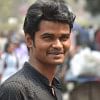
 For all latest news, follow The Daily Star's Google News channel.
For all latest news, follow The Daily Star's Google News channel. 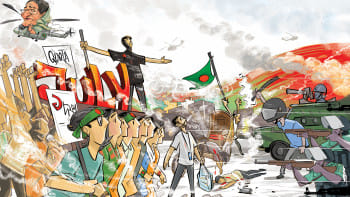



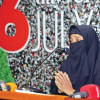




Comments